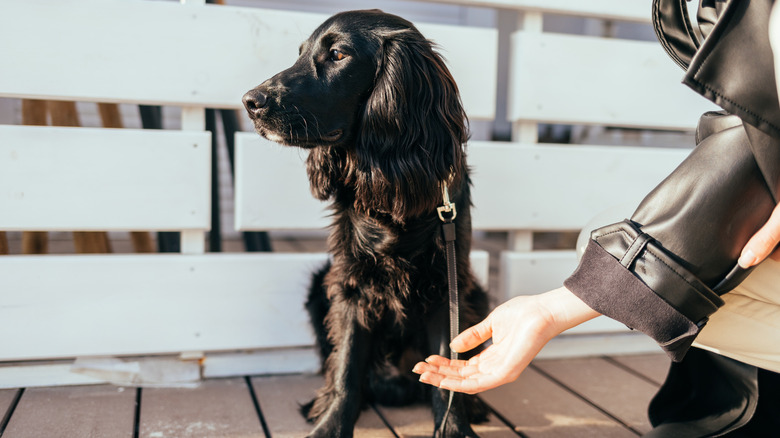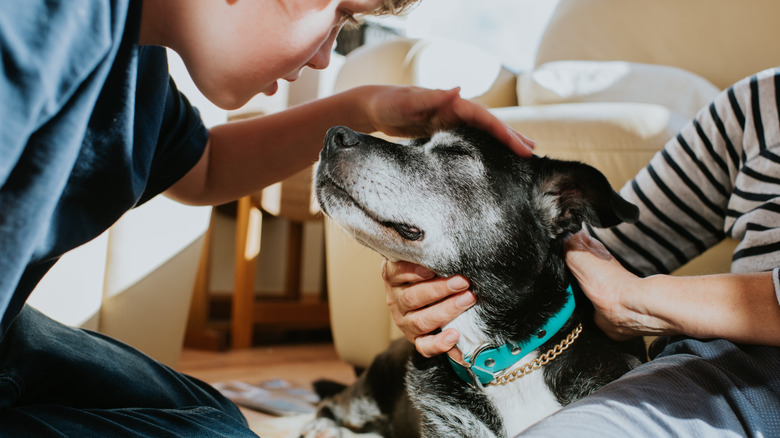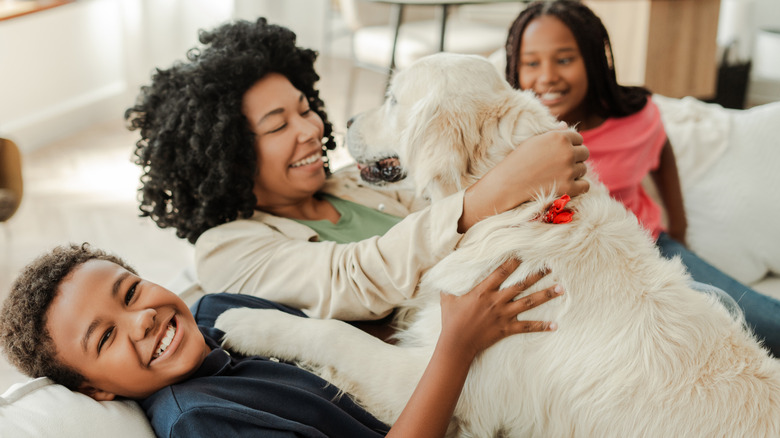The Common Behavior Most Dogs Love But Some Don't - And Here's Why
Welcoming a new dog into a home is a cause for celebration, excitement, and reflection on how much a new furry friend will change your life. Still, everyone has certain expectations about what a canine will bring, and bonding through cuddles and pets is one of the givens that many anticipate. This is true for many dogs, but others may not be interested in cuddling or receiving physical attention from their owners.
Dogs have unique personalities, and just like people, some don't enjoy being touched, or at least only at certain times when they are comfortable welcoming it. Instead, some faithful companions prefer to show love through play or a walk rather than curling up and having their heads patted. Other canines may have special needs or requirements. Notably, dogs with post-traumatic stress disorder, affecting between 5% and 17%, may struggle with expressing themselves and receiving affection. As PTSD can occur in dogs with a troubled past, it's important for an owner to consider whether they are ready to adopt a dog and if they can take on the responsibility of a pet that may struggle. Finally, a dutiful pet owner should consider potential medical issues if sudden changes occur in behavior; pain and discomfort can cause a dog to shy away from affection when they craved it previously.
A dog that does not want to be petted isn't necessarily telling its owner it doesn't trust them, but instead is looking for another kind of attention. Think of it as a unique love language your pooch shares by bringing it a toy or expressing excitement before a walk. Some dogs just aren't cuddly, and that is okay. However, there are ways that potential pet parents can work with their pet to get the snuggle buddy of their dreams.
How to help a dog be more affectionate and appreciate cuddles and pets
Learning how to care for a puppy can come with plenty of challenges. Still, during this period, puppies are like little, adorable sponges ready to learn as both the owner and the dog start to understand each other. As dogs get older, they become more hesitant about new situations. While dealing with other struggles like vet visits and potty training, getting a puppy used to being touched, petted, and held is essential. Getting a growing dog used to being handled will increase the chances of becoming a cuddly canine as an adult.
For mature dogs already set in their ways, an owner can still take steps to help the tentative canine open up. Making your hands a positive instead of something to be wary of starts by never reaching out to try to pet it first. Instead, make your hands an object of joy by dropping treats or toys nearby so an inquisitive pooch begins to see them positively. Finally, make your hands passively available and let it come to you; with time, it may welcome a pet after brushing up against your hand.
Pet parents can also choose a qualified dog trainer to assist them, particularly if their pet is reactive to touch and displays aggression. Teaching a dog to open up can be challenging and emotional, but owners owe it to their new furry friends to care for their needs and gradually work toward a common goal.
Adopting an affectionate dog breed can help ensure it loves pets and cuddles
A dog's breed has been determined to affect only 9% of its behavior, meaning pet parents should always prioritize individuality over breed. Still, certain breeds are known for being more affectionate than others. For bigger dogs, the beloved family favorites, the golden retriever or the Newfoundland, are renowned for their cuddly nature. Those looking for a smaller companion may consider the adorable floof, the Pomeranian, or the faithful follower, the Cavalier King Charles spaniel.
If a cuddle buddy is the goal, potential pet parents may want to avoid more independent dogs like the chow chow or malamute. Of course, there are exceptions on each side, and it is vital to research before adopting, including meeting the dog if possible, to gauge how compatible it will be in its potential forever home. It is important to remember that, like people, each dog is unique; some may take more time to open up, while others will find different ways to express gratitude to a loving owner. Patience, love, and understanding can go a long way to getting those bonds you want with your dog.


